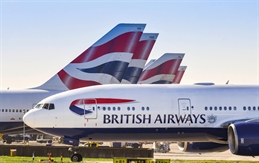
As belly hold capacity remains short of demand, forwarders feel pressed to line up charters to secure lift. With the prospect of a slower-than-hoped-for return on passenger flights, operators are lining up additional freighter capacity.
On January 27, Geodis announced a dedicated weekly freighter flight between Shanghai and Guadalajara, set to start in early March. According to the company, this will run at least until the end of next year.
The new flight supplements a weekly link between Hong Kong and the Mexican city that was established in 2019. Last November the forwarder mounted a dedicated freighter operation across the Atlantic with three weekly flights between Amsterdam and Chicago.
“We believe a freight partner who is controlling the transport service network, including flight operations, is a vital asset to Asian exporters,” said Onno Boots, Geodis’ regional president, and CEO for the Asia Pacific. “This latest extension to AirDirect is part of an own controlled network that provides seamless control over shipments within our multi-modal network throughout Asia.”
Other logistics firms also see a growing need for dedicated freighter capacity. DB Schenker indicated earlier in January that it intends to add a new flight connecting Asia, Europe and North America. The company already operates a controlled network using 43 flights a week run by several carriers. About half of those are full charters.
Even forwarders with a smaller presence in the airfreight arena like CH Robinson see a need for dedicated freighter capacity. “It’s becoming a more and more important part of our offering,” CEO Bob Biesterfeld said in an earnings call.
The scramble for freighter lift is the result of a dearth of air freight capacity, due to the grounding of large numbers of passenger aircraft. According to IATA, overall capacity was down 20% year-on-year in November, although freighter capacity increased slightly.
International lift was down 21.3%, with the sharpest contraction in the Asia-Pacific region, which registered a 25.3% decline. The airline interest group concluded in its traffic report for November that some demand likely could not be met.
Hopes for a rebound in passenger flights to boost belly capacity have been shattered in recent weeks as the resurgence of Covid-19 infections in many countries prompted governments to tighten travel restrictions. Instead of ramping up passenger operations further, airlines had to enter another round of cutbacks.
Air Canada is cutting passenger capacity by 25%. For the most part, this affects domestic routes with no widebody capacity, but the international travel restrictions are decimating long-haul flights with widebody planes. A few days before Christmas, British Airways announced that it would drop 15 long-haul routes. Among the cities affected are Seoul, Kuala Lumpur and Osaka as well as Pittsburgh and Calgary. Flights to Bangkok, Sydney and San Jose will be temporarily suspended during the summer.
Forwarders are bracing themselves for an extended spell of insufficient belly lift, which accounts for nearly 50% of global cargo traffic. A poll taken by the US Airforwarders Association in late January found that 70% of respondents did not expect belly capacity to return to pre-pandemic levels before 2023, while 20% thought this could happen in 2022 and 10% doubted it would ever get back to that magnitude.
Demand, on the other hand, has continued to grow. Based on the momentum seen since June, IATA estimated in December that global traffic could be back at pre-Covid levels by March. Above all, e-commerce is widely predicted to keep growing at elevated levels, fuelling strong demand for air freight.
Carriers are looking to add main deck capacity to their fleets. On January 12, DHL signed an order for eight Boeing 777 freighters, which will start entering its fleet next year. Management pointed to the robust growth in e-commerce, which it described as a sustained megatrend.
On the same day Boeing announced that Atlas Air, the largest 747 freighter operator, had snapped up the final four 747-8Fs to roll off its production line. They are scheduled for delivery next year.
Others are turning to parked passenger planes to convert into all-cargo configurations. Having signaled its intention on that front last fall, Air Canada (AC) has signed an agreement with ATSG subsidiary Cargo Aircraft Management, under which the latter purchases two of the airline’s 767-300s and has them converted into freighters, which will be leased back to AC. Management is looking to add more 767s to its freighter lineup down the road.
Freighter conversions are going strong. Conversion specialists like Aeronautical Engineering, which focuses primarily on 737s, and Precision Aircraft Solutions, which converts 757s and has a joint venture for Airbus A321 conversions, reported full order books.
For shippers, the prospect of an ongoing shortage of air cargo capacity spells the continuation of the high price environment that has characterized the past eight months. In December air freight rates from Hong Kong and Shanghai to major US gateways were up around 100% from a year prior.
By Ian Putzger
Air Freight Correspondent | Toronto



